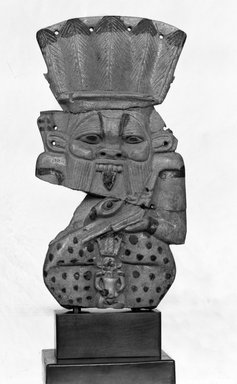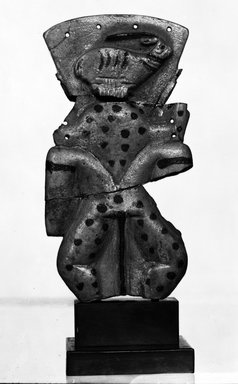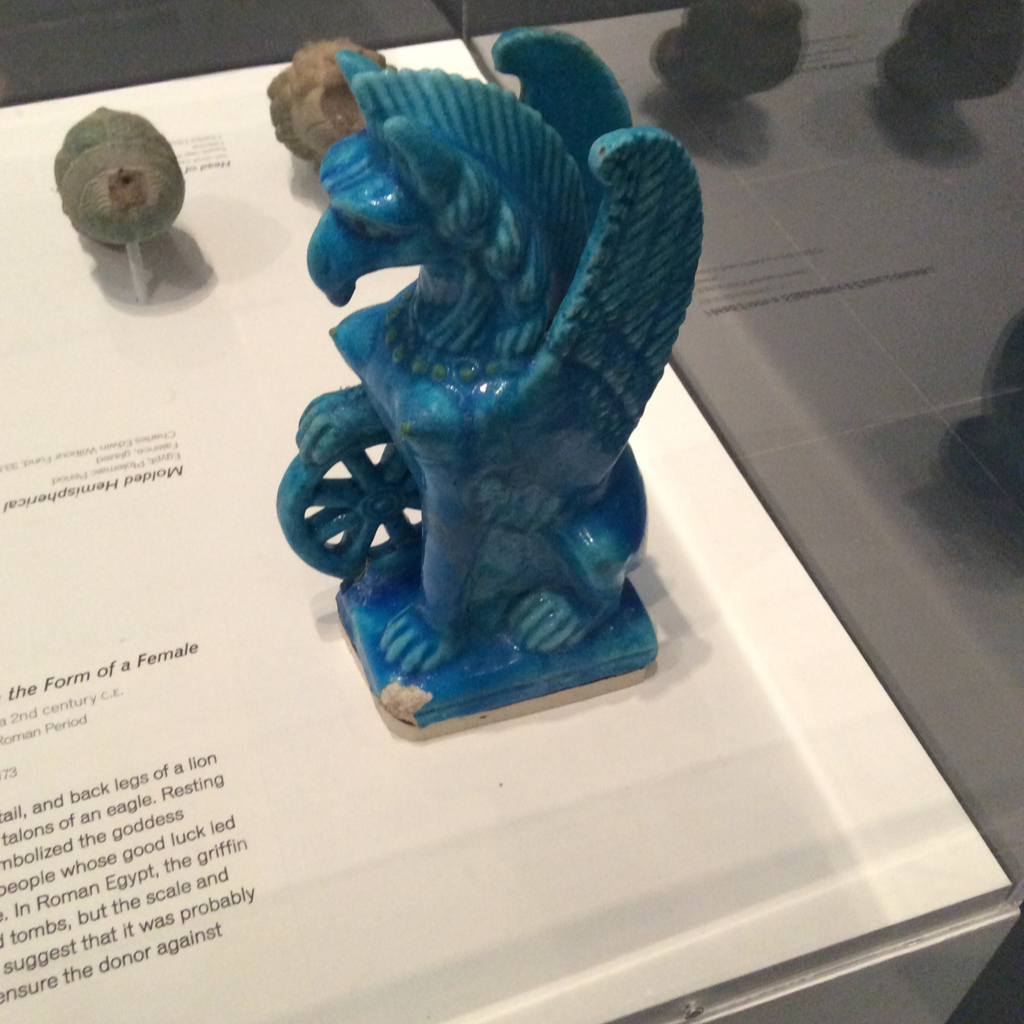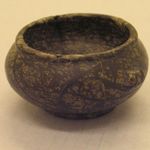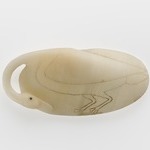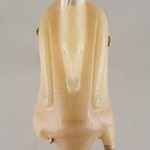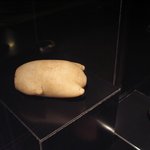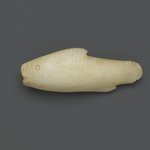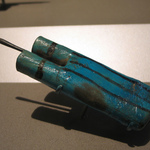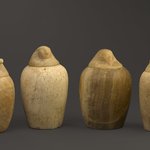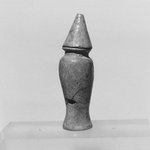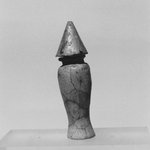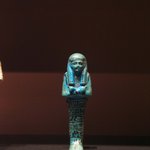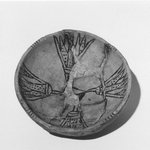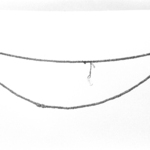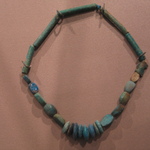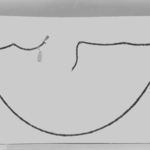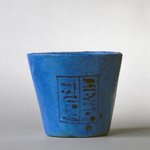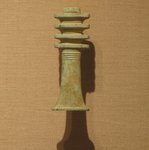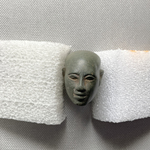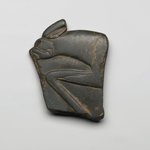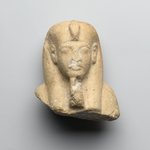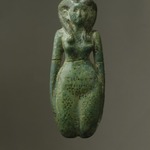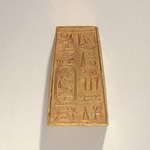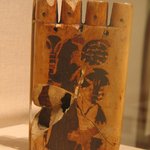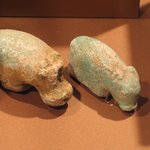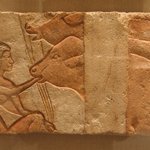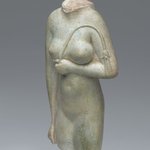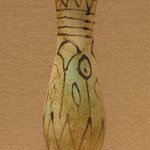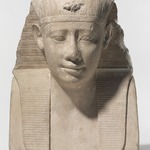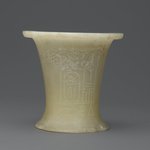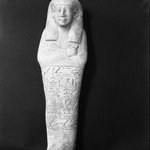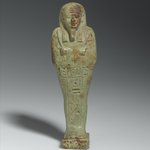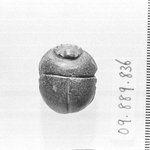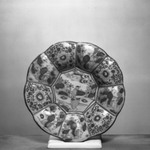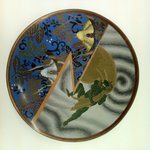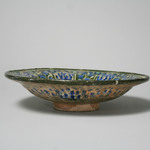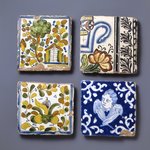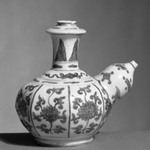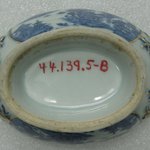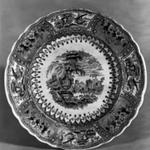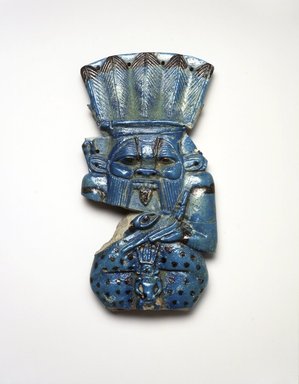

Figure of the God Bes, ca. 945–712 B.C.E., or later. Faience, 6 7/8 x 3 5/8 x 7/8 in. (17.5 x 9.2 x 2.3 cm). Brooklyn Museum, Charles Edwin Wilbour Fund, 37.309E. Creative Commons-BY (Photo: Brooklyn Museum, 37.309E_transp6128.jpg)
Figure of the God Bes
Egyptian, Classical, Ancient Near Eastern Art
The unusual frontal attitude, extended tongue, and feathered headdress of the leonine god Bes offer a powerful image of protection. This terrifying deity was believed to guard worshippers during the most vulnerable moments of pregnancy and childbirth, and in the transition between life and death.
MEDIUM
Faience
DATES
ca. 945–712 B.C.E., or later
DYNASTY
Dynasty 22
PERIOD
Third Intermediate Period
DIMENSIONS
6 7/8 x 3 5/8 x 7/8 in. (17.5 x 9.2 x 2.3 cm) (show scale)



COLLECTIONS
Egyptian, Classical, Ancient Near Eastern Art
ACCESSION NUMBER
37.309E
CREDIT LINE
Charles Edwin Wilbour Fund
CATALOGUE DESCRIPTION
Large blue and black glazed figure of the god Bes. The piece is glazed blue with the details rendered in black. The piece is rather flat although modeled on both front and rear surfaces. The god wears his feathered headdress which is pierced, from front to rear, with four holes for attachment or suspension. On his shoulders were monkeys (now mostly missing). Between his legs, and rendered in relief, is another small Bes figure. On the rear of the feathered headdress a bound antelope is rendered in relief.
Condition: Mended from three pieces. Legs missing. Monkeys mostly missing from shoulders. Much of right arm missing. Small chip in leg of smaller Bes figure.
EXHIBITIONS
MUSEUM LOCATION
This item is not on view
CAPTION
Figure of the God Bes, ca. 945–712 B.C.E., or later. Faience, 6 7/8 x 3 5/8 x 7/8 in. (17.5 x 9.2 x 2.3 cm). Brooklyn Museum, Charles Edwin Wilbour Fund, 37.309E. Creative Commons-BY (Photo: Brooklyn Museum, 37.309E_transp6128.jpg)
IMAGE
overall, 37.309E_transp6128.jpg. Brooklyn Museum photograph
"CUR" at the beginning of an image file name means that the image was created by a curatorial staff member. These study images may be digital point-and-shoot photographs, when we don\'t yet have high-quality studio photography, or they may be scans of older negatives, slides, or photographic prints, providing historical documentation of the object.
RIGHTS STATEMENT
Creative Commons-BY
You may download and use Brooklyn Museum images of this three-dimensional work in accordance with a Creative Commons license. Fair use, as understood under the United States Copyright Act, may also apply.
Please include caption information from this page and credit the Brooklyn Museum. If you need a high resolution file, please fill out our online application form (charges apply).
For further information about copyright, we recommend resources at the United States Library of Congress, Cornell University, Copyright and Cultural Institutions: Guidelines for U.S. Libraries, Archives, and Museums, and Copyright Watch.
For more information about the Museum's rights project, including how rights types are assigned, please see our blog posts on copyright.
If you have any information regarding this work and rights to it, please contact copyright@brooklynmuseum.org.
RECORD COMPLETENESS
Not every record you will find here is complete. More information is available for some works than for others, and some entries have been updated more recently. Records are frequently reviewed and revised, and we welcome any additional information you might have.
